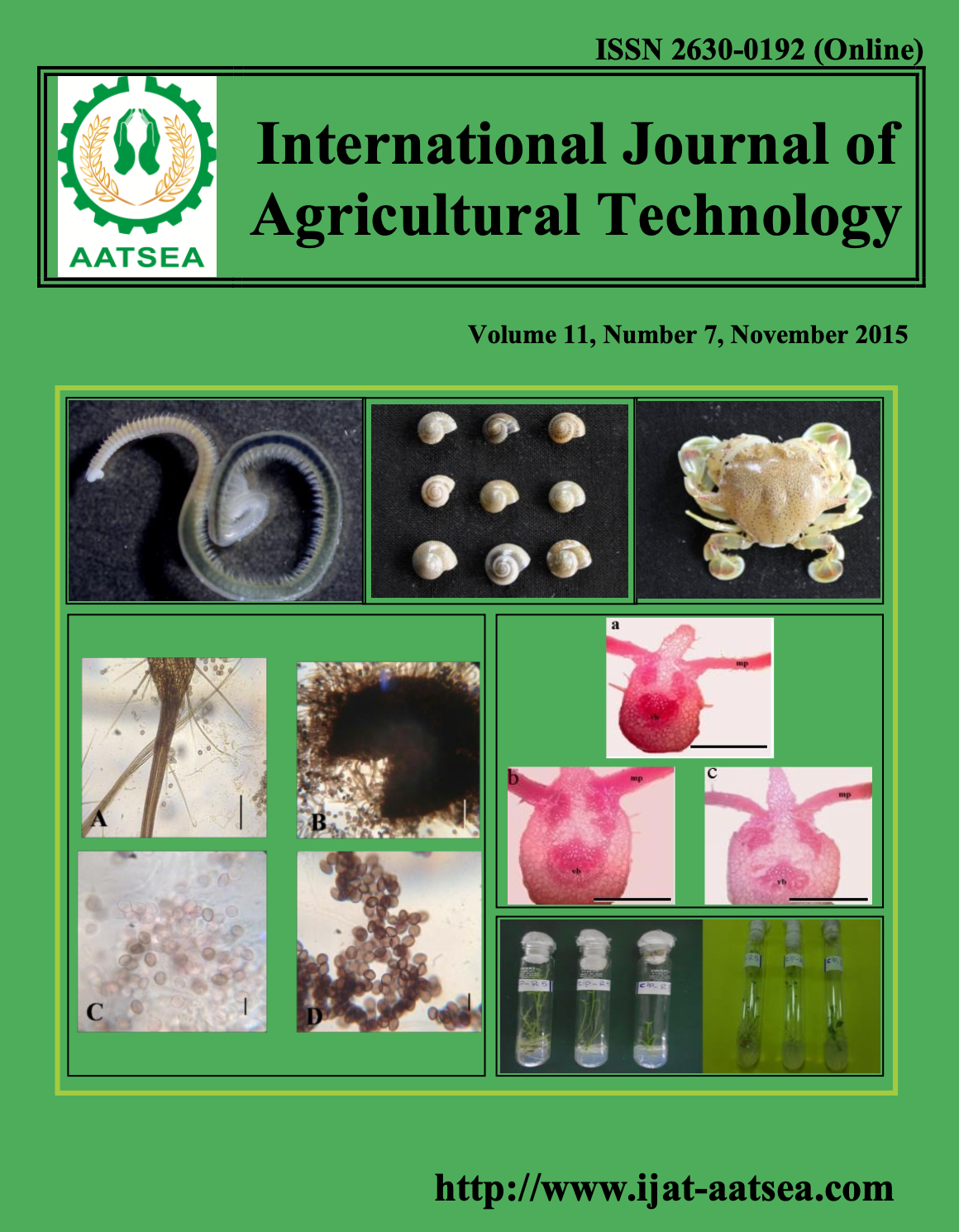Efficacy of bioformulations of indigeneous bacterial bioagents strains against bacterial wilt of Curcoma longa L.
Main Article Content
Abstract
Article Details

This work is licensed under a Creative Commons Attribution-NonCommercial-NoDerivatives 4.0 International License.
References
Burr, T. J., Schroth, M. N. and Suslow, T. (1978). Increased potato yields by treatment of seed pieces with specific strains of Pseudomonas fluorescens and Pseudomonas putida. Phytopathology 68:1377-1383.
Jacobson, C. B., Pasternak, J. J. and Glick, B. R. (1994). Partial purification and characterization of 1-aminocyclopropane-1- carboxylate deaminase from the plant growthpromoting rhizobacterium Pseudomonas putida GR12-2. Canadian. Journal of Microbiology 40:1019-1025.
Jinnah, M. A., Khalequzzaman, K. M., Islam, M. S., Siddiqui, M. A. K. S and Ashrafuzzaman, M. (2002). Control of bacterial wilt of tomato by Pseudomonas fluorescens in the field. Pakistan Journal of Biological Sciences 5:1167-1169.
Kallupurachkal, J. A. and Ravindran, P. N. (2002). Turmeric: Hints for Cultivation. Spice India 15:6-11.
Kumar, B. S. D., Berggren, I. and Martensson, A. M. (2001). Potential for improving pea production by co-inoculation with fluorescent Pseudomonas and Rhizobium. Plant and Soil 229:25-34.
Loper, J. E. and Schroth, M. N. (1986). Influence of bacterial sources of indole-3-acetic acid on root elongation of sugar beet. Phytopathology 76:386-389.
Nagorska, K., Bikowski, M. and Obuchowskji, M. (2007). Multicellular behaviour and production of a wide variety of toxic substances support usage of Bacillus subtilis as a powerful biocontrol agent. Acta Biochimica Polonica 54:495-508.
Ongena, M. and Jacques, P. (2008), Bacillus lipopeptides: versatile weapons for plant disease biocontrol. Trends Microbiology 16:115-125.
Priou, S., Marquez, M. and Gutarra, L. (2005). Biological control of bacterial wilt of potato (Ralstonia solanacearum) using antagonistic Pseudomonas putida strains. Phytopathology 95:885.
Ramamoorthy, V., Raguchander, T. and Samiyappan, R. (2002). Enhancing resistance of tomato and hot pepper to Pythium diseases by seed treatment with fluorescent pseudomonads. European. Journal of Plant Pathology 108:429- 441.
Ross, I. A. (1999). Medicinal Plants of the World. Chemical constituents, traditional and modern medicinal uses. New York: Humana Press.
Muthukulam, S. (2001). The Lucrative 'Yellow Fingers'. Spice India. pp. 14-18.
Smith, J. J., Offord, L. C., Holderness, M. and Saddler, G. S. (1995). Genetic diversity of Burkholderia solanacearum (Synonym Pseudomonas solanacearum) race3 in Kenya. Applied Environmental Microbiology 61:4263-4268.


